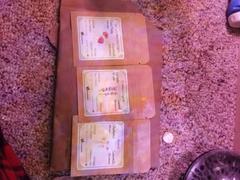One of the most beloved scents, the sweet fragrance of lavender brings back memories of a serene summer for many people. Common English lavender, also known as Vera Lavender, is a flowering woody perennial herb native to the cool regions of the Northern Mediterranean. Common English lavender is the most popular and reliable variety as it is used extensively in the production of oils and perfumes. Often associated with the famous magical purple fields of Provence in France, the spectacular plants will reach maturity in the second year and can live for 20-30 years.
Common English Lavender is a very vigorous variety that is hardy to zones 5-8 in Canada and will bloom from late spring throughout summer, even after spending a winter under the snow. The delicate purple flower spikes grow on top of slender green stems, which can reach 20-24’’ tall. Common English lavender makes an excellent border in the garden, but it also grows really well in pots. Consider pairing it with Echinacea, Baby’s Breath and Asters.
The earthy scent of lavender can be used as soothing aromatherapy to help with sleep, anxiety and to invoke calmness. When turned into essential oil, lavender can be used medicinally, and, most interestingly, lavender can also add an exotic touch to your cooking. Whether you use it as a garnish or as a main ingredient for a sweet or savory recipe, lavender can brighten up many dishes. Check out this recipe for amazing sea salt lavender and white chocolate chip cookies: http://www.takeabiteblog.com/blog/2014/05/the-best-cookies-youve-ever-made.html
- Latin Name: Lavandula angustifolia
- Life Cycle: Perrenial
- Canada Hardiness Zone: 4-9
- Days to Maturity: 90-120
- Planting Depth: 3-4 mm
- Plant Spacing: 45 cm
- Growth Habit: 50-60 cm tall
GROWING INSTRUCTIONS
With an amazing fragrance and undeniable health, medicinal and cleaning properties, the popularity and prevalence of lavender in home gardens is understood easily. Lavender is not easy to start from seed, but the patient gardener will certainly be rewarded by its abundance of beautiful and aromatic flowers.
Start seeds in flats or separate pots 12 weeks before the last frost date. Seeds should be barely covered. A light sprinkling of soil will do. Some light exposure is required for germination. Plant them about 3 cm apart and mist well. Keep the growing medium moist, but not too wet. Temperature should remain at 21 degrees or higher. It may take seedlings a month to sprout. When they do, be sure they receive at least 8 hours of light per day.
When young lavender plants have their first set of true leaves, they can be transplanted into a bigger container. Wait until they reach a height of 8 cm and the last spring frost has passed before transplanting outside. Harden off the young lavender by gradually exposing them to the elements. Select a location that has well-drained soil and receives full sun. Plant lavender 30-60 cm apart.
During the first year of growth, water the plants well and prune off any flowers to redirect energy to the roots. Prepare lavender for cold weather by mulching around the base of the plant. By following these steps, your lavender bushes should thrive and produce beautiful blooms for years to come!
QUICK FACTS
- Lavender was used in ancient Egypt over 2500 years ago.
- The name Lavender comes from the Latin verb, "lavare," which means to wash.
- Back in the Elizabethan times, when baths weren't common practice, lavender was used to perfume clothes and bed linen.
- Lavender seeds will remain viable for 5 years if stored in a cool, dark place, ideally between 4 and 10⁰C. After that, the germination rate may start to go down.
OUR SEED GUARANTEE
You know that a lush, fruitful garden needs good soil, frequent watering, and sunlight to grow, but it’s the seeds that really make the harvest.
Picked and bagged for 2026 the vast majority of our seeds have germination rates of over 85%. The seeds are all-natural, non-GMO, non-hybrid, untreated, and open-pollinated for seed saving.
We have put a lot of thoughts into the design and packaging of our seed packets. Our seeds are all carefully packed in food grade kraft paper/aluminium zipper lock bags, and then are shipped in eco-friendly padded mailers.
We heat-seal each of our seed packet for even more protection from moisture, odour and light, allowing you to store your seeds for up to 3x longer than paper or plastic. Plant them all, germinate some indoors, save some for next season - it’s up to you!





![[Premium Quality Ethical & Sustainable Seeds]-Ecoseedbank](http://ecoseedbank.com/cdn/shop/products/lavenderenglish_{width}x.jpg?v=1643373677)

